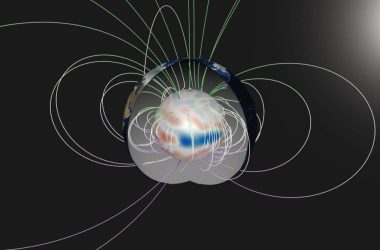Introduction
The United Nations’ climate conference in Scotland has sparked discussions on climate change policies and the effects of global warming. As an atmospheric scientist, I have spent my career studying global climate science and assessments. Here are six important things you should know, illustrated through charts.
1. The Driving Force Behind Climate Change
The main focus of climate change negotiations is on carbon dioxide, a greenhouse gas released through burning fossil fuels, forest fires, land use changes, and natural sources. The burning of fossil fuels during the Industrial Revolution led to a significant increase in carbon dioxide emissions. Scientific measurements have shown a steady rise in carbon dioxide levels, primarily attributed to fossil fuel combustion.
Graph: The increase in carbon dioxide emissions over time
2. Evidence of Greenhouse Gases’ Impact on Climate
Scientific evidence from ice cores, tree rings, corals, and neighboring planets supports the link between high carbon dioxide levels and high temperatures. For example, when carbon dioxide levels were high in the past, temperatures were also high. Venus, with its thick carbon dioxide atmosphere, is the hottest planet in our solar system.
Graph: Correlation between carbon dioxide levels and temperatures
3. Global Temperature Trends
Temperature records from around the world show a rise in temperatures on every continent. However, the rate of temperature increase varies due to factors like land use, urban heat islands, and pollution. The Arctic is warming at a much faster rate than the global average, leading to accelerated snow and ice melt.
Graph: Temperature change across different continents
4. Impact of Climate Change on the Planet
Climate change affects various aspects of Earth’s system, with even small temperature changes having significant consequences. Rising temperatures impact precipitation, glaciers, weather patterns, tropical cyclones, and extreme storms. Heat waves, in particular, have severe implications for ecosystems, human lives, commerce, and agriculture. The melting of glaciers and rising temperatures contribute to an increase in ocean water levels.
Graph: Rising ocean water levels over time
5. Hope for the Future
Ongoing scientific research is improving our understanding of climate change, identifying vulnerable areas, and guiding efforts to reduce its drivers. Renewable energy and alternative energy sources, along with carbon capture technologies, offer solutions for a more sustainable future. Individuals are also taking steps to reduce their own impact and embrace energy-efficient practices.
Graph: Increasing adoption of electric vehicles and renewable energy sources
Conclusion
Climate change is a pressing issue, backed by scientific evidence and global consensus. As we work towards sustainable solutions, it is crucial to understand the impact of carbon dioxide emissions and the urgent need for action. By collectively addressing climate change, we can create a better and more resilient future for our planet.
Article Source: Betsy Weatherhead, The Conversation








